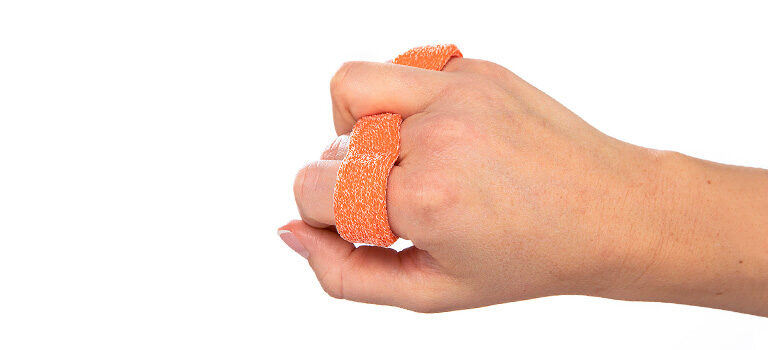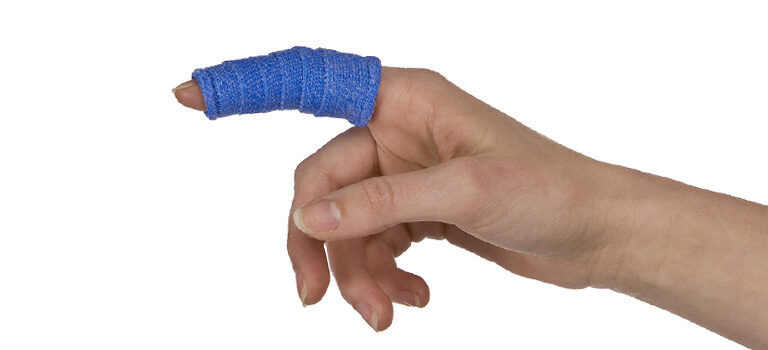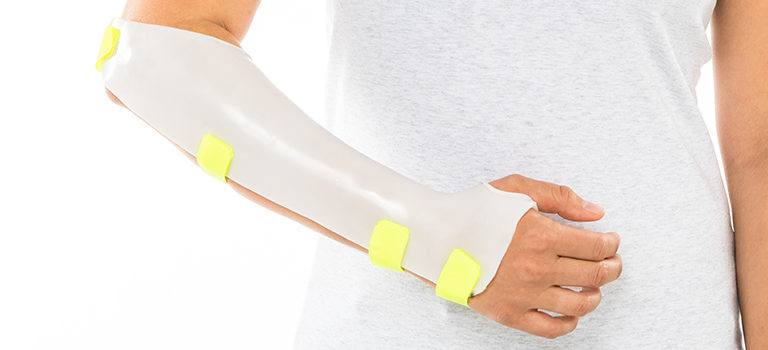
Splint in the Spotlight – Dart Thrower’s Motion Orthosis (also known as the Dart Splint)

Our Orfit blog shares information and instructions in matching our thermoplastic materials to orthotic designs.
Please check back frequently to gain inspiration and ideas in orthotic fabrication for all of your patient’s needs.
Splint Design: Dart Thrower’s Motion Orthosis (also known as the Dart Splint)

Objectives of the Splint:
The Dart Thrower’s Motion Splint allows for guided motion in the plane known as “dart thrower’s motion”, an oblique motion of the wrist that is incorporated during most of our activities of daily living. The motion consists of radial deviation and extension (called radial extension) towards ulnar deviation and flexion (called ulnar flexion). It has been noted in biomechanical studies that the proximal row of carpal bones does not move during this motion. Therefore a splint design that allows for early controlled wrist motion in a narrow plane of motion might be helpful for regaining some functional range after injuries to the proximal row of carpal bones, specifically injuries to the Scaphoid- Lunate ligament.

This splint is only helpful when this ligament is intact. The splint pattern is lightweight, comfortable and designed to guide the wrist through this specific motion pattern, while restricting pure wrist flexion and/or extension.
A recent article by authors Braidotti et al, published in the Journal of Hand Therapy in 2015, highlights one specific design for this orthosis (which is shown in a modified version here), but there are many other alternative designs and variations.
Pathologies:
This splint might be appropriate for patients seen following carpal bone injuries and post-operative surgical rehabilitation protocols for treatment of scaphoid-lunate disassociations, radio-carpal ligament repair, mid-carpal instability and radio-scaphoid-lunate fusions.
Patients might also benefit from wearing this splint as a conservative treatment option for wrist sprains and carpal instability patterns. The unique design offers a degree of wrist stability for healing, but allows limited motion for functional activities.

Product recommendations:
Orfit Industries offers a variety of elastic based products which are excellent choices for this unique splint. Materials such as Orfit Classic, Orfit NS, Aquafit NS and Orfit Colors NS in 2.0 mm- 2.4 mm (1/12” – 3/32’) thicknesses would all work well for the fabrication of this design.
In addition, Orfilight, Orfilight Black NS and the new Orfilight Atomic Blue NS (to be announced soon!) in 2.5 mm (3/32”) are also excellent choices for this orthosis.
All of these materials conform extremely well to the anatomy and bony prominences of the wrist, especially when stretched into a circumferential design. The non-stick (NS) coating allows splint makers to utilize the pinch method making it easy to fabricate circumferential orthoses. When cooled, the pinches can be separated easily and trimmed away.
A circumferential splint is formed around the hand and forearm and cut into a hand based section and a forearm based section. The two sections are then reconnected via strips of Orfit splinting material placed strategically from the distal hand based portion of the splint to the forearm portion of the splint, with the distal part fixed by a rivet to allow some degree of motion. The more proximal portion is fixed by dry heating the material.
The connecting thermoplastic material between the hand based portion of the splint and the forearm based piece can be a scrap of the same thermoplastic material used in the splint, rolled tightly into a tube and then flattened, or even a small strip of Orficast rolled into a tubular structure.

It is highly recommended to practice fabrication of this orthosis on other clinicians to understand the intricacies of the wrist anatomy and the specific movement pattern of the dart throwing motion.
Wearing schedule:
All functional orthoses are designed to be worn during functional activities. When treating patients with carpal bone injuries and /or proximal carpal row instabilities, consider this splint as an option. But always verify the appropriateness of this orthosis with the referring doctor/ surgeon and discuss the optimal wearing schedule for each individual patient.
![]()

Written by Debby Schwartz, OTD, OTR/L, CHT
Physical Rehabilitation Product and Educational Specialist at Orfit Industries America.
Debby is a certified hand therapist with over 36 years of clinical experience. She completed her Doctorate of Occupational Therapy at Rocky Mountain University of Health Professions in 2010. She has worked at Orfit Industries America as Product and Educational Specialist since 2007.
Debby is also an adjunct professor at the Occupational Therapy Department of Touro College in NYC and has written many book chapters in the field of hand therapy and multiple articles for hand therapy journals, including the ASHT Times and the Journal of Hand Therapy. She has published a new textbook on orthotic fabrication together with Dr. Katherine Schofield, entitled “Orthotic Design and Fabrication for the Upper Extremity: A Practical Guide”.
![]()
Contact us for more product information or find your local distributor here.
![]()
If you’d like to receive the latest product updates and interesting Orfit news, subscribe to our newsletter:



